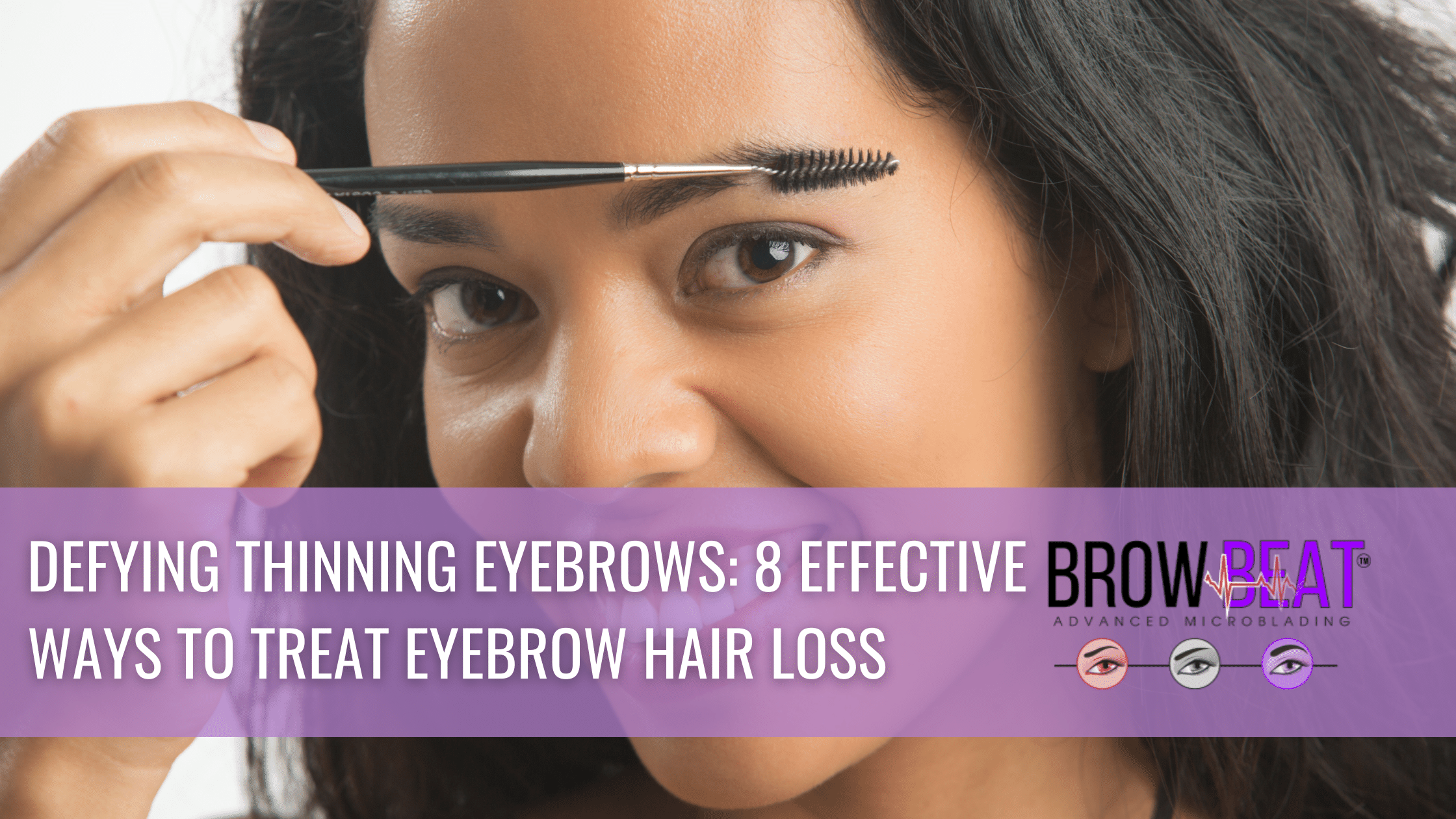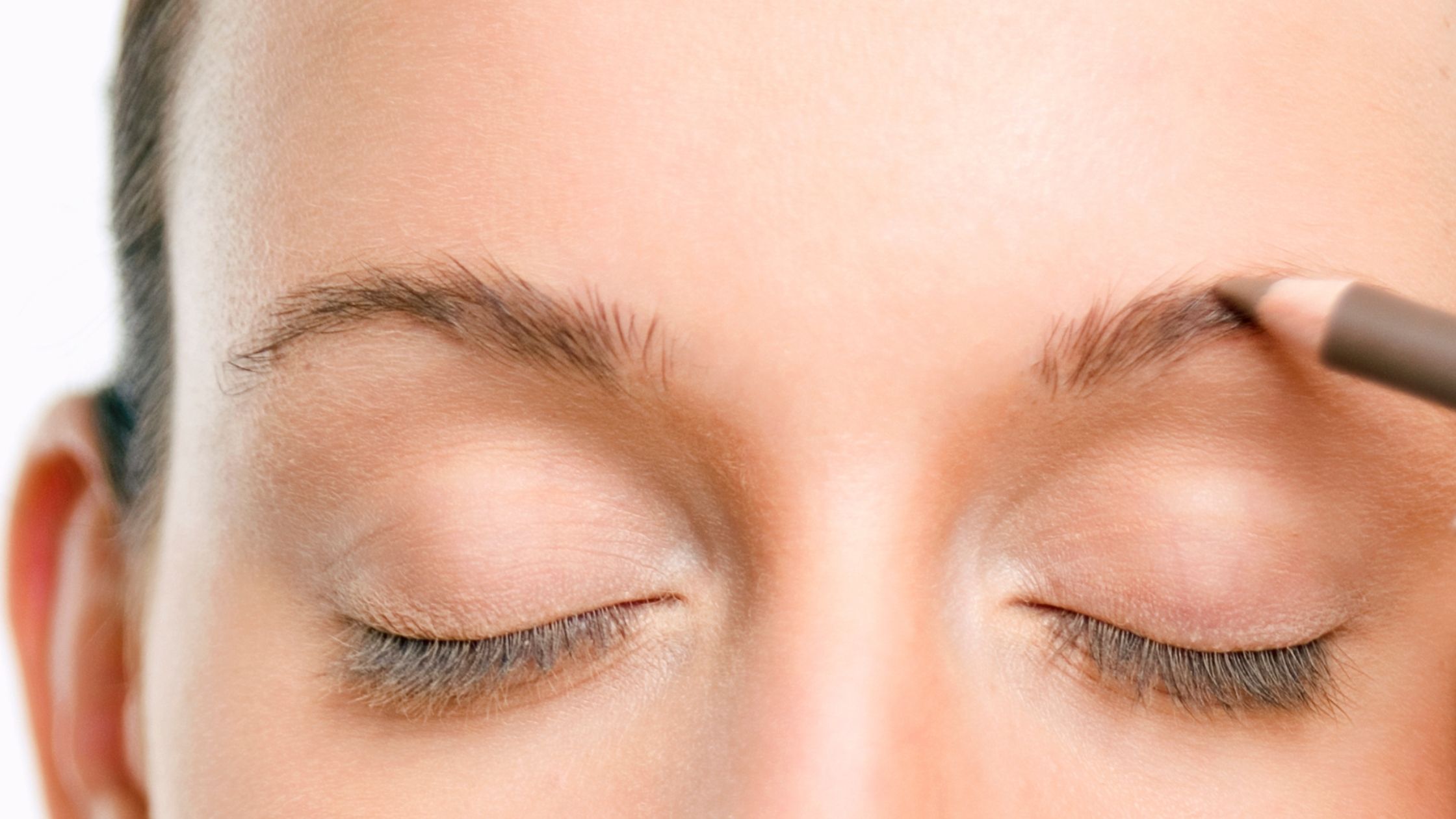Thinning eyebrows can be a massive problem for people. It’s difficult to find answers about it, and not everyone’s comfortable talking about their own experience. The thing is not all eyebrow hair loss problems are the same. Some are more serious than others, while some can be solved by taking action today!
If you or someone you know is suffering from thinning eyebrows, you’ve come to the right place. In this article, we’ll let you discover how you can find solutions to this problem and fight back with grace!
Reasons Why People Get Thinning Eyebrows
There are many potential reasons why people lose eyebrow hair. And the best initial action to solving this problem is to identify which one is bringing it to you.
Thus, here are some of the probable root causes of your thinning eyebrows:
Aging
As people age, estrogen levels for women and testosterone for men (responsible for hair growth) deteriorate. This leads to hair loss, not just in the head, but also in other parts of the body, including the face. This is why there are people who start to experience thinning eyebrows when they reach the age of 40.
Overplucking
We all know that ladies love perfect eyebrows! It’s the main reason why we pluck, twist, and cover up our brows. However, overplucking may stop the hair growth on our brows, which results in thinning eyebrows.
Excessive Makeup Use
Makeups enhance the beauty of women, but not all cosmetics are gentle to the skin. Some are harsh and affect the growth of the hair, primarily when used for long hours.
Stress and Anxiety
When you feel too much stress and anxiety, you may experience physiological changes. For example, decreased oxygen in the hair follicles and a fluctuation in hormone levels play a role in thinning eyebrows.
Pregnancy and Giving Birth
Hormonal changes happen during pregnancy and childbirth. These can cause hair loss or thinning of hair strands both in the head and eyebrows.
Skin Conditions
Various skin conditions can also be considered factors in thinning eyebrows. These include the following:
Tinea Capitis (Ringworm)
Also known as ringworm, Tinea Capitis makes the skin red, itchy, marked with ring-like patches, raised with blisters. When these patches develop, hair strands start to fall out.
Contact Dermatitis
When your brow skin contacts an allergen or toxic irritant, a burning feeling and itchiness may occur and hamper hair production. This makes your eyebrows thin even more.
Eczema
Eczema or Atopic Dermatitis can cause thinning eyebrows because of the inflammation on the skin it brings, making it itchy, red, irritated, and discharged.
Psoriasis
This kind of skin condition is an autoimmune disorder that makes the skin cells increase rapidly. This produces scaly, thick, red, and painful patches that hinder the growth of the hair in the follicles.
Alopecia Areata
Another autoimmune disorder affecting the skin is Alopecia Areata. When you have this condition, your immune system falsely believes that the hair follicles are your body’s enemy. Thus, it attacks them, causing the hair growth to slow down or stop completely.
Nutrient Deficiencies
Certain nutrients are also responsible for hair growth. And lack of these nutrients and energy sources results in thinning eyebrows.
The nutrients and energy sources our bodies need are:
- Fats
- Carbohydrates
- Fats
- Amino and Fatty acids (Omega-3)
- Vitamins (C, E, B-12, and D) and Minerals
- cysteine
- Vitamin B-7
Other Factors that Cause Thinning Eyebrows
Apart from the ones, mentioned above, there are many other causes for eyebrow hair loss. Most of these are rare conditions or are not experienced by many. These include:
- medication
- genetic conditions
- other health conditions
Hence, a consultation with a health professional is really necessary to determine and confirm the root of the problem.
Treatments for Thinning Eyebrows
After sitting down with a health practitioner and discussing your condition’s root cause, the next step is to treat the problem. The following treatments for your thinning eyebrows include:
Microblading
Microblading is a known beauty solution that makes the eyebrows appear thicker and bushier. In the same manner, it gives people with thinning eyebrows a chance to cover the sparse brows area and enhance their overall look.
Microblading involves the use of a small handheld tool with tiny needles. An artist uses these microneedles to manually create delicate hair strokes as they deposit the pigment underneath your skin. Because of this, you can expect to have natural eyebrow hairs that don’t get washed off.
Because the treatment is considered a semi-permanent form of tattoo, its results can last for up to three years. Moreover, the dye particles in the pigment used for microblading are not as concentrated as tattoo ink. Hence, microbladed eyebrows appear softer and highly realistic.
Nutritional Supplements
To prevent nutritional deficiencies leading to hair loss in both women and men, supplements with omega-3 and omega-6 fatty acids and antioxidants can help.
Acupuncture
For people with Alopecia Areata, acupuncture can help increase their blood flow and lessen the possibility of charging the hair follicle bulb.
Castor Oil
Castor oil is a home remedy that helps inhibit thinning eyebrows and bring back the thickness of the strands.
Eyebrow Transplant
Hair transplant is also an alternative treatment for thinning eyebrows. Just like scalp hair replacement, eyebrow transplant restoration involves the removal of a section of the skin from a place that has enough hair. The hair follicles from this portion of the skin are then transplanted to a sparse area in your eyebrows.
Contact-Sensitizing Topical Chemicals
Whenever you experience thinning eyebrows, it may be practical to elicit an allergic response that can prompt hair growth. However, these chemicals can typically provide a side effect that induces rash formation.
Minoxidil and Corticosteroids
Minoxidil is a topical medication that assists in bringing back the inhibited hormonal growth for several months. It has versions for both males and females. While corticosteroid (topical, pill, or injectable) decreases the body’s immune response and inflammation, which treats skin conditions like alopecia areata, eczema, psoriasis, and dermatitis.
It will be more effective to use the two medications together.
Topical Immunotherapy for Alopecia Areata
Since the 1970s, people have adopted topical immunotherapy for treating some immune-mediated skin problems. Experts have recommended this modality as the first-line treatment in recalcitrant and severe Alopecia Areata. That’s because of the treatment’s minimal adverse side effects and better efficacy that the reports have shown.
For decades, topical immunotherapy’s potential role in treating Alopecia Areata and numerous substances was introduced for this purpose. There are three agents that doctors commonly prescribe. They are DPCP (diphenylcyclopropenone), SADBE (squaric acid dibutyl ester), and DNCB (dinitrochlorobenzene).
The Implementation of Topical Immunotherapy for the Treatment of Alopecia Areata
For any topical sensitizing agent used for treating AA, they come with a standard protocol. These substances can be available commercially, either as a solution of acetone or in powder form. To preserve their therapeutic properties, you need to have the agents stored inside amber glass kept away from the light of the sun at a 4°C temperature.
Initially, patients get sensitized with a 2% solution applied on an area of 4×4 cm on the scalp or the upper arm. After sensitization for a couple of weeks, the treatment will start with the substance’s weekly application. It’s advisable to begin from the most negligible concentration of 0.01% on the side of the scalp.
The other side will then become the control. Two days after application, the patient must wash the scalp and avoid sunlight as much as possible.
You may also have to increase the substance’s concentration every week. Doing this can maintain the tolerable erythema and itching or optimal eczematous reaction. Following this reaction, you need to have your attention adjusted carefully. Whenever the regrowth of hair becomes evident on the side with treatment, you can have the substance applied to the whole scalp. You can expect the hair to regrow as you treat it for three to six months. However, make sure to discontinue the procedure if regrowth doesn’t occur after half a year.
Conclusion on Topical Immunotherapy
Nowadays, people consider topical immunotherapy as the first-line treatment that’s highly effective in addressing extensive Alopecia Areata.
Doctors are now prescribing DPCP (diphencyprone or diphenylcyclopropenone), DNCB dinitrochlorobenzene, and SADBE (squaric acid dibutylester). That is because these are sensitizing agents that have appreciable tolerability.
Does It Really Work?
Even if this is what people use commonly, they have not yet elucidated the exact mechanism that underlies topical immunity for the treatment of Alopecia Areata. According to accumulated evidence, topical immunotherapy is highly advantageous compared to no treatment at all.
Yet, as we compare the efficacies of numerous clinical studies on various substances, it can be hard to assess due to the variations in study durations, treatment protocols, and evaluation methods.
Because of that, it is best to use topical immunotherapy with caution for a safe and effective treatment. Suppose it is vital to establish a highly effective treatment against this disease. In that case, further studies are necessary on the precise pathways through which the sensitizing agents are functioning and the roles of the cytokines to predict treatment and disease outcomes so that people can have a better understanding of Alopecia Areata’s pathophysiology.
Preventing Hair Loss
It may sound cliché, but prevention can be so much better than cure as it works in all circumstances. Thus, here are some things you can do before you even experience thinning eyebrows:
- Let go of some things and take it easy. Stressing so much over something can cause hormonal changes and affect your overall health.
- Eat lots of fruits, vegetables, and lean protein. Having the right amount of nutrients in the body makes you less prone to this problem.
- Use makeup products that are gentle to the skin.
- STOP PLUCKING YOUR EYEBROWS. We need to say it, and you need to control it.
Finally, it’s important that you keep educating yourself about the problem and the factors that can cause it. This is especially the case if hair loss is in your family genes.
The Bottom Line
There are various factors that cause the thinning of eyebrows. And learning about each one is essential to keep yourself away from such dilemmas. However, apart from the ones mentioned in this blog, there are some that we have yet to discover.
Hence, it’s best to seek the help of a health professional when you’re experiencing the problem. Your doctor may advise you to take some tests to determine if the cause of your eyebrow’s condition is because of a health problem. This will help safely address the concern right away.
But whatever the cause of your problem is, microblading is an excellent option that can help cover your thinning eyebrows. The treatment is also proven safe for almost everyone and yields results you can enjoy for more than a year. And if you decide on doing microblading, BrowBeat Studio Dallas Advanced Eyebrow Microblading Experts welcomes you to have your eyebrow transformation with us!
Thank you for taking the time to read this article. Stay posted on our next blog.
Call BrowBeat today on 214 432 3077 to make your Microblading appointment. Book Now
BROWBEAT STUDIO
Dallas Advanced Microblading Experts
1800 Market Pl Blvd Ste 130
Irving , Texas 75063
Phone: 214-432-3077
Things To Consider Before You Get Microblading
Pros and Cons of Microblading Your Eyebrows
Dallas Semi-permanent makeup eyebrows
Microblading Side Effects You Should Know About
Permanent eyebrow tattoo cost in Dallas
Eyebrow tattoo



